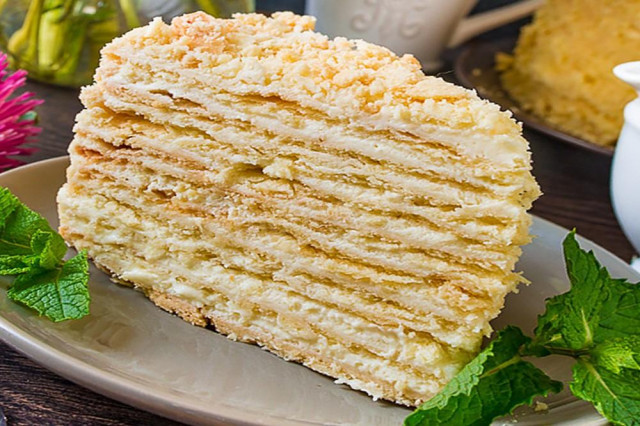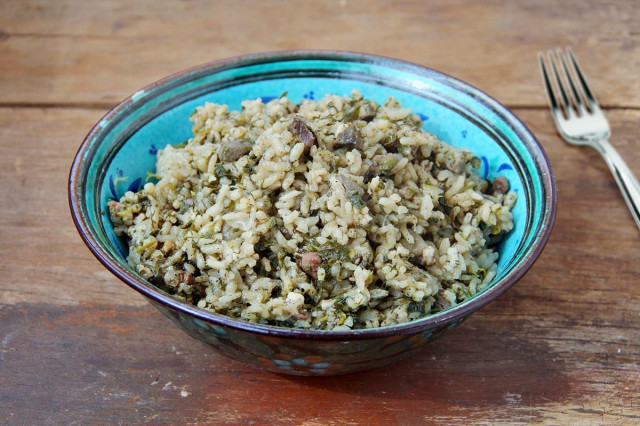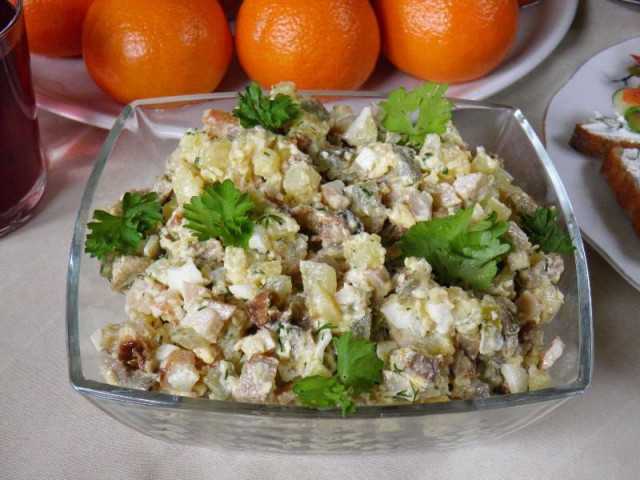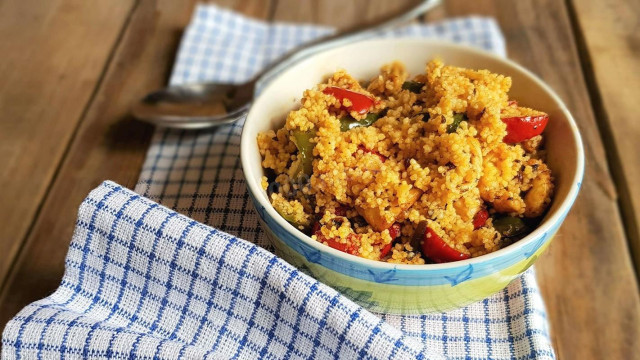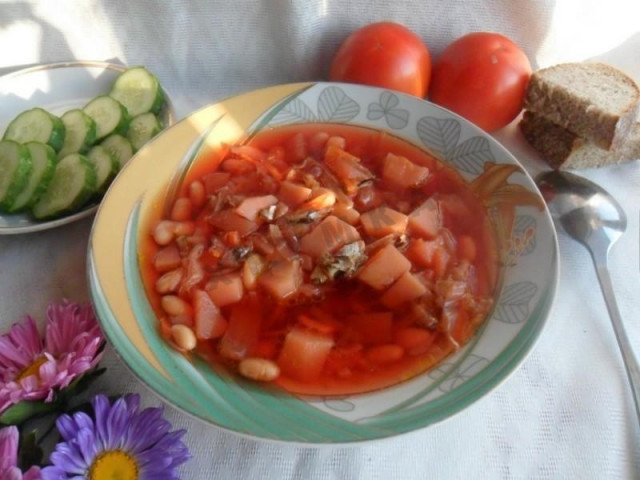Composition / ingredients
Cooking method
First we prepare the dough for the cakes of the future cake. To do this, sift the flour into a large bowl, thereby making it even more airy and saturated with oxygen. Chop the solid butter with a sharp knife into small pieces and add it to a bowl with flour. Next, with the help of a food processor or just with our hands, we rub the butter with flour to the state of fat crumbs. In the process of kneading, add salt, chicken egg and table 9 percent vinegar. To put the crumbs together and make the dough more elastic, add cold or even ice water to it a little at a time. Thanks to this, the cakes from this will be layered and crunchingly appetizing. In the process of mixing water, you may need a little more or a little less - depending on the type of flour and its gluten.
The result should be a soft elastic dough, which we divide into 10 parts. We will wrap each piece of dough in plastic wrap so that it does not dry out, and send it to the refrigerator for half an hour.
Pre-turn on the oven at 190-200 degrees Celsius.
While the dough is "resting", we will prepare the cream for the cake. Mix eggs and egg yolks with sugar and starch in a separate container. Carefully beat them with a mixer. Boil the milk in a saucepan. After that, pour the hot milk into the egg-sugar mixture in a thin stream, without ceasing to beat it with a mixer. Then pour the resulting mass back into the pan and put it on a slow fire, where, with constant stirring, we cook the custard until it thickens for 3-5 minutes. Next, remove the pan from the heat and put the butter in it. stir the cream until the oil is completely dissolved and cover the pan with cling film. Let the custard part of the cream cool.
Meanwhile, we take the dough out of the refrigerator and roll out each piece into a thin sheet of a round shape with a diameter of 21-23 cm. Each cake is pierced with a fork or knife. Then we put it on a baking sheet, previously covered with baking paper. Bake cakes in a preheated oven in turn and several pieces at once (depending on the number of available sheets) for 5-6 minutes each.
While the cake cakes are cooling down, we will prepare the creamy part of the cream. To do this, pour the cold cream into a bowl and use a mixer to beat them to a thick consistency. After that, add the whipped cream to the cooled custard and mix with careful movements until smooth.
Each cake is liberally smeared with cream, and one is left for crumbs. Grind it in a blender and sprinkle the cake with the resulting crumbs on top and sides.
We put the cake in the refrigerator for 6 or more hours, or better for the whole night, so that it is well soaked and becomes soft.
Bon appetit!
Caloric content of the products possible in the composition of the dish
- Whole cow's milk - 68 kcal/100g
- Milk 3.5% fat content - 64 kcal/100g
- Milk 3.2% fat content - 60 kcal/100g
- Milk 1.5% fat content - 47 kcal/100g
- Concentrated milk 7.5% fat content - 140 kcal/100g
- Milk 2.5% fat content - 54 kcal/100g
- Whole durum wheat flour fortified - 333 kcal/100g
- Whole durum wheat flour, universal - 364 kcal/100g
- Flour krupchatka - 348 kcal/100g
- Flour - 325 kcal/100g
- Granulated sugar - 398 kcal/100g
- Sugar - 398 kcal/100g
- Starch - 320 kcal/100g
- Butter 82% - 734 kcal/100g
- Amateur unsalted butter - 709 kcal/100g
- Unsalted peasant butter - 661 kcal/100g
- Peasant salted butter - 652 kcal/100g
- Melted butter - 869 kcal/100g
- Salt - 0 kcal/100g
- Water - 0 kcal/100g
- Cream 35% - 337 kcal/100g
- Cream 40% - 362 kcal/100g
- Egg yolks - 352 kcal/100g
- Chicken egg - 80 kcal/100g
- Table vinegar - 11 kcal/100g

